A pool filter has one job: clean dirty water! Chemical sanitizers like chlorine kill bacteria and other contaminants in the water but don’t remove them from the pool.
This is where the filter comes in. It removes organic contaminants and smaller debris that pool skimmers can’t catch.
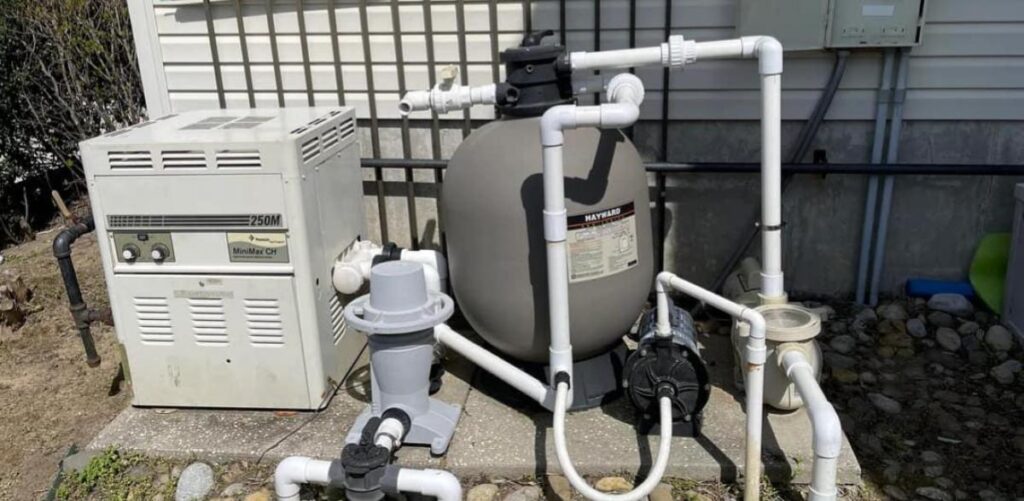
Besides the pool pump, it is one of the most important parts of your swimming pool.
How Does a Pool Filter Work?
Filters are part of a pool’s filtration system (great name!), comprising both the filter and pump.
They are usually positioned right after the pump in the overall system.
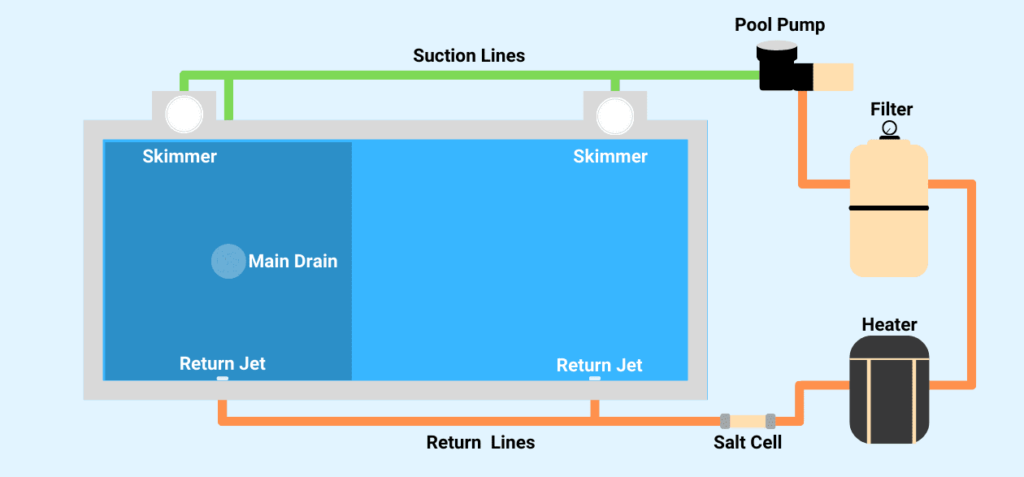
The filter’s job is to, well, filter! The water that gets pushed into it isn’t clean or particles of debris flow through the pipes.
It’s the filter’s job to catch debris in the grids, cartridges, or sand, depending on the type of filter you are using.
Afterward, the pressure side system directs cleaner water back into the pool.
Some pool filters can also have multiple functions by using a multiport valve system. Filters can be completely bypassed, rinsed, and closed off depending on the setting of these valves.
Different Types of Filters To Use
You typically have three types of pool filters to choose from: sand filters, cartridge filters, and diatomaceous earth (DE) filters.
Depending on the size and type of pool, each has its benefits and drawbacks. They have different cleaning methods and filtration capabilities.
The level of filtration is based on microns. A micron, abbreviated for micrometer, is a unit of length that is one-millionth of a meter! To put it in perspective, a singular strand of a spider web is about 2-3 microns.
Bacteria can also be that small, so the filter’s ability to catch and hold tiny elements is key.
Sand Filters
Sand filters are essentially large containers filled with sand. As water passes, the sand traps dirt, debris, and other contaminants, leaving clear water to return to the pool.
Typically, sand filters are filled with 20-grade silica sand. This can catch particles as small as about 20-30 microns. Alternative media, including adding some DE, can help with better filtration as well.
By properly maintaining your pool chemistry and keeping the water balanced, you can reasonably expect the sand to last 5 years before it needs to be replaced.
Sand filters are fairly easy to maintain. Besides backwashing, you may break up sand particles with a broom or use a hose to rinse the sand thoroughly.
Replacing sand is relatively inexpensive, and you don’t have to deal with any grids or cartridges.
Cartridge Filters
Cartridge filters are filled with paper-like cartridges that catch debris and contaminants.
They work like sand filters, passing water through the cartridges and back into the pool. They are a little more efficient at filtration than sand filters as they typically can catch particles as tiny as 10-20 microns in size.
A filter typically contains only one cartridge, though bigger filters can contain multiple. It is recommended that they be replaced every 2-3 years.
Maintaining a cartridge filter isn’t overly complicated, though it can get a little wet! You typically clean the cartridges by removing them from the filter and washing them with a hose.
DE Filters
The most effective filter (and the most expensive to purchase) is a diatomaceous earth filter, or DE for short. The filter contains 8-10 grids, or fingers as they are sometimes called, that can be individually pulled or replaced.
These filters use a DE powder from fossilized remnants of tiny organisms called diatoms. You may also see DE powder used in pesticides and as a “food-grade” ingredient in toothpaste, skin care products, and other household items.
For a swimming pool, however, this powder is caked onto the filter’s grids/fingers and catches the contaminants as water passes through. DE filters can catch particles 3-5 microns in size, easily making them the most effective and efficient filters you can use.
Choosing the Right Size Filter For Your Pool
Not only are there different kinds of filters to choose from but there are also different sizes. This can become quite overwhelming when choosing the right filter for your pool.
While the type of filter you choose is more of a preference based on maintenance and effectiveness, the size of the filter will be based on your pool’s size and current equipment.
Filter sizes are based on flow rates in gallons per minute (GPM) per square foot, not necessarily the actual size of the filter casing. So, you need to consider your current pump’s flow rate as well.
As a general rule of thumb, it is a good idea to oversize your filter so it can easily handle your pump’s power. It’s better for the filter to not have to work as hard.
Pool Parts to Go has a fantastic breakdown of choosing your size based on your pool and pump size. As a note, if you need a rough estimate of your pool size, use our volume calculator.
A general breakdown based on your pool size is as follows:
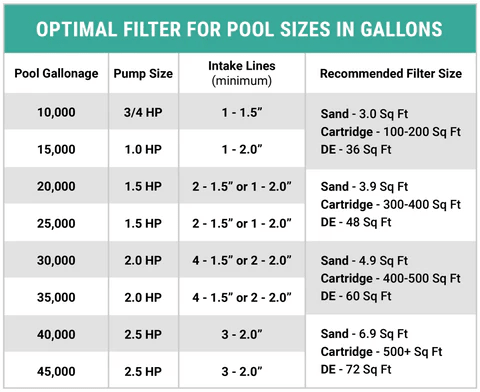
As stated above, you need to take into account the pump as well.
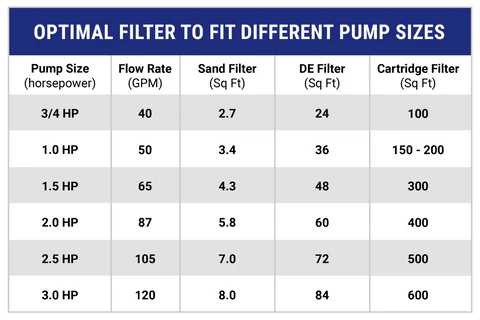
Again, if you are stuck on a size to choose based on the criteria above, go with the higher size to give to minimize the pressure you put on both the filter and pump.
Filter Maintenance
Like any other piece of equipment, pool filters can and will wear down over time. Routine seasonal maintenance will ensure that your filter lasts for many years.
Water Pressure
The water pressure gauge on top of your filter is a super valuable tool. It indicates how hard the filter is actually working to circulate clean water back into the pool.
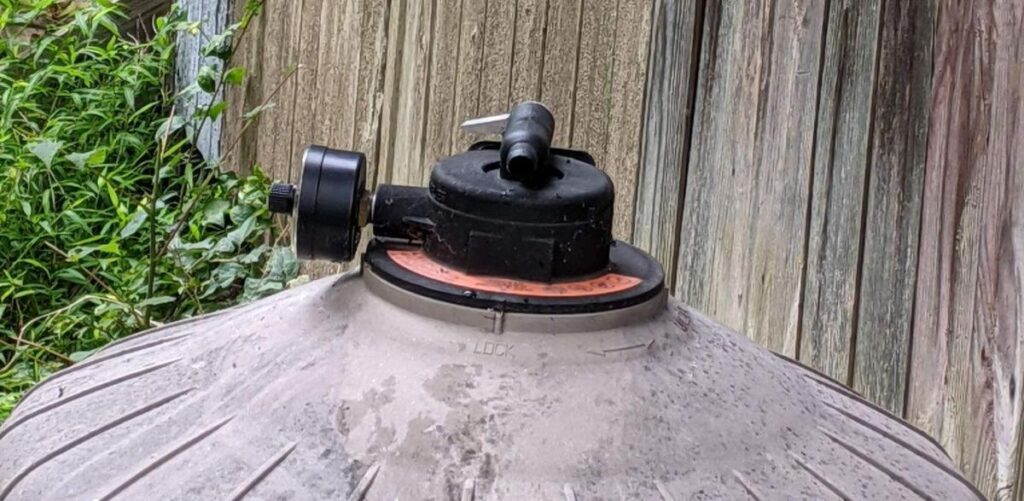
When you first open the pool for the season and you’ve got your filter charged and ready to go, turn it on and remember the pressure gauge reading. This should be your normal working PSI for your pool.
Then, as the season goes on, if it gets out of that range, you’ll know there could be a potential problem. A good rule to follow is to clean out your filter when your pressure gauge is about 25% above normal PSI levels.
However, your pressure can drop as well. Here’s what to watch for overall:
- High Pressure: This typically indicates the filter is full and the media is dirty which would require a rinsing or backwash. But, it can also be caused by a clog after the filter system or a malfunctioning part. Regular cleaning and backwashing (for sand and DE filters) can help maintain optimal pressure.
- Low Pressure: This might indicate a leak or a clog somewhere before the filter system, like in the pump or the pipes. Basically, water isn’t getting into the filter as much as it should.
Check your pressure gauge about once a week and make sure it is within your normal working range. To make this easier, some pressure gauges will have an indicator to let you know if your pressure is getting too high!
Cleaning and Backwashing
As filters do their job of, well, filtering, they will get clogged up. After all, that dirt and debris has to stay somewhere!
As said above, clean your filter when your pressure gauge reading is about 25% above normal PSI levels.
For cartridge filters, this involves taking the cartridge media out of the filter casing and washing them down with a hose.
For sand and DE filters, this process is called backwashing. Rather than taking the grids out and manually cleaning them as you do with cartridge filters, backwashing allows you to flush out the grids and filtration media without the need to remove them.
There is an actual BACKWASH setting on most multiport valves which makes the process pretty simple, though it may take 3-5 minutes for a complete clean.
Identify Any Leaks
Fortunately, leaks are fairly easy to notice on a filter. You will typically see a water path on the filter itself. Like any other leak, these should be fixed as soon as you can.
You should routinely do a visual inspection around the filter to look for any drips or spraying water coming out of the tank, valve connections, and pressure gauge.
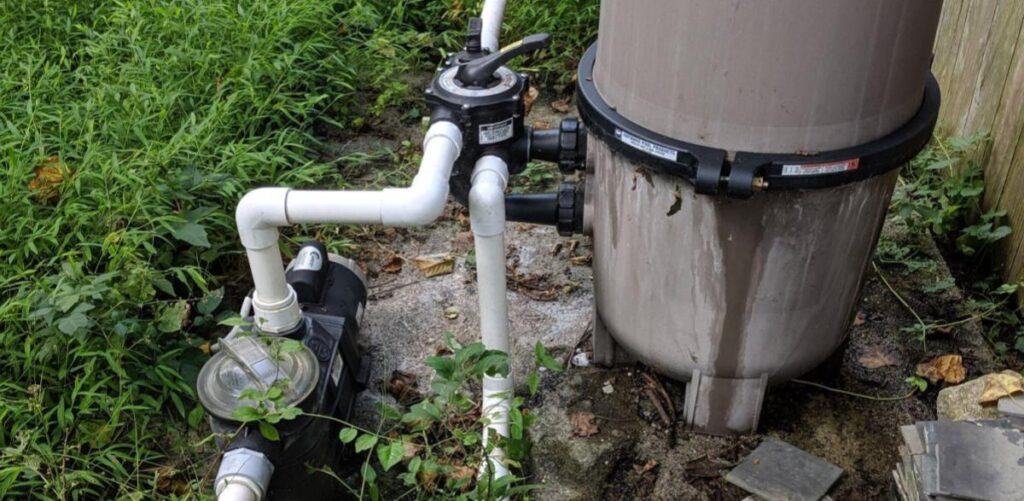
Most leaks can be fixed fairly easily if it isn’t the shell of the filter itself. If you do notice dripping water, turn off the filter and de-pressurize your tank before taking it apart. Check all your gaskets and o-rings, clamps, and replace or re-lubricate if necessary.
The Right Size Filter Makes All The Difference
Take your time and do the research when you need to purchase a filter. The wrong size filter, either big or small, can cause your pump to work harder than it should, reducing its life span.
Also, lengthen its lifespan with routine maintenance and checks throughout the year. Hopefully, the only problem you encounter is that it’s make the pool too clean!
